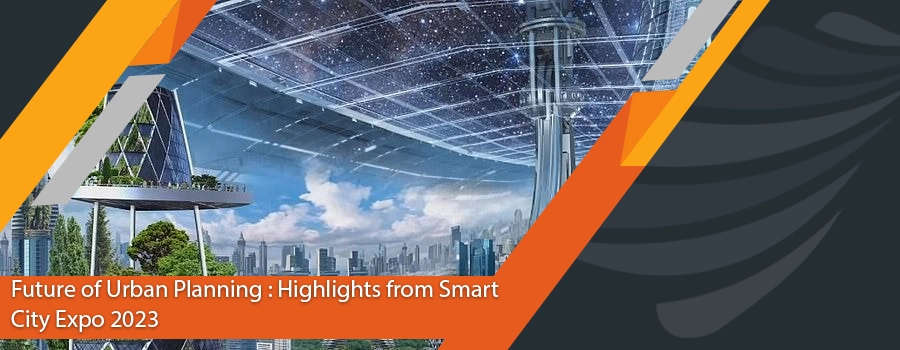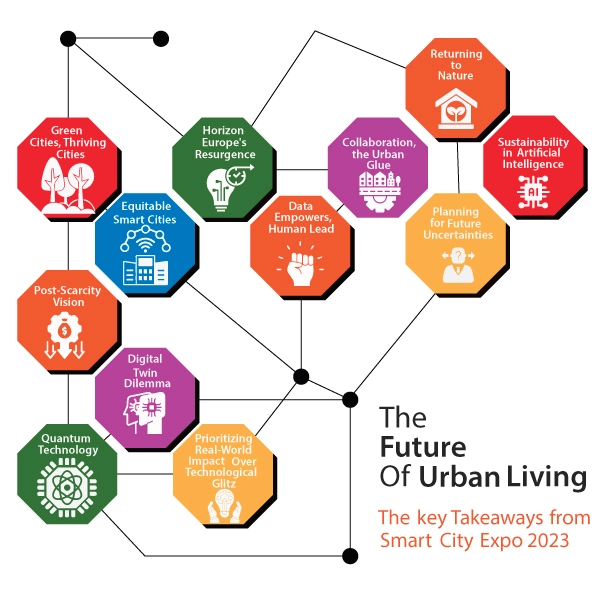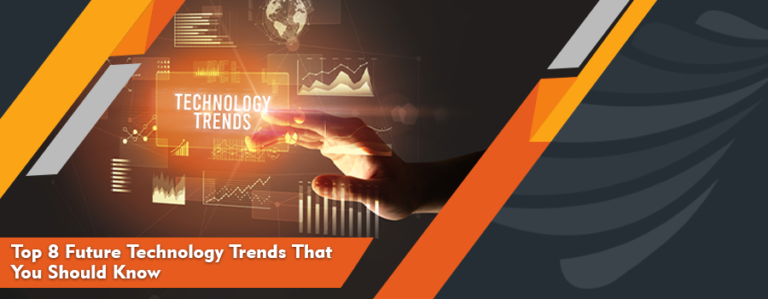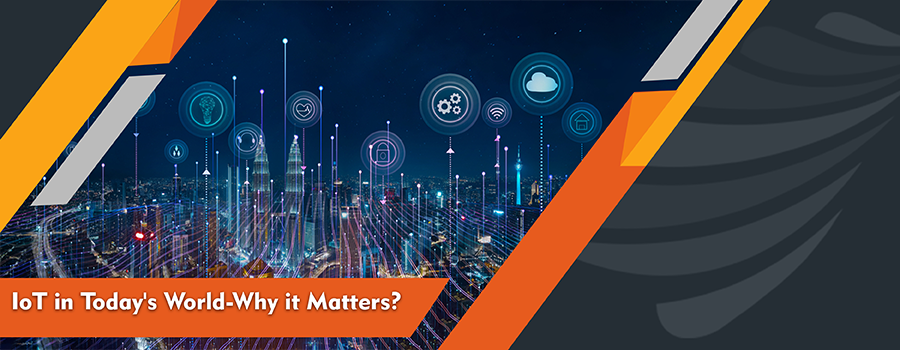In November 2023, the ‘Smart City Expo World Congress 2023’ was organized in the vibrant city of Barcelona with a spotlight on innovation and the future of the urban landscape. This yearly event showcased the most recent breakthroughs and offered a glimpse into the future, highlighting the significance of integrating transformative technologies in urban landscapes to benefit society.
Being the largest event, it attracted famous leaders, businesspeople, scientists, startups, and policymakers from all over the globe. Among many esteemed participants, Conure Technology Services showcased their smart solutions and got an enormous response.
Here, we present the complete highlights of the Smart City Expo 2023 and our impactful participation in this transformative event.
What is the Smart City Expo World Congress (SCEWS)?
The Smart City Expo World Congress, held in Barcelona from November 7-9, stood as the foremost international event in the smart city sector. It was a pivotal meeting point for visionaries and leaders from the world’s most innovative cities, companies, research centers, and international organizations. With over 24,000 professionals attending from over 800 cities and insights shared by over 600 international speakers, the congress provided a platform to exchange ideas and perspectives on constructing a sustainable and livable urban future.
Structured around eight main tracks addressing pressing urban issues, including Enabling Technologies, Energy and environment, Mobility, Governance, Living and inclusion, Economy, Infrastructure and building, and Safety and security, the event showcased a comprehensive exploration of smart city solutions. Following the previous year’s success, the congress seamlessly integrated physical and digital spaces, offering a hybrid experience that reached a broader audience and allowed everyone to fully engage with the event.
Future of Urban Living: The Key Takeaways from Smart City Expo 2023
The expo featured a wide range of cutting-edge ideas and technology that are changing the face of urban planning. Smart City Expo 2023 highlights that integrating smart technologies with seamless design is the future of urban planning, followed by featured sustainable architecture, resilient infrastructure, and data-driven government.
1. Returning to Nature – the decline of techno determinism
The exhibition’s agendas showed a discernible trend away from tech-utopianism and toward a more reflective approach to the effects of the digital era, which have led to a degree of human separation from the natural world.
This shift was evident in presentations that explored emerging possibilities at the crossroads of biology and quantum computing, proposing using plants as switches and energy repositories. Talks about streamlining smart city architecture to lessen its digital imprint and better integrate it with nature also occurred. Significantly, a Samsung subsidiary promised to “revitalize the human” while providing an all-in-one smart city solution.
2. Sustainability in Artificial Intelligence
This year’s conference was primarily focused on generative AI, and talks brought up an important issue: the prohibitive expense of operating and training large language models (LLMs), such as those that underpin Chat GPT.
For example, training models the size of GPT-4 are believed to have cost more than $100 million in energy. This cost includes the energy required for computational processing to build the model and data center operations and the continuous energy requirements associated with API requests for frontend functions such as Chat GPT.
To address these issues, the exhibition is a vital hub where scholars, innovators, and industry stakeholders can exchange ideas and develop sustainable strategies. The expo acts as a catalyst for influencing the future of artificial intelligence by promoting communication and highlighting the technology’s environmental responsibility.
3. Planning for Future Uncertainties
With life and business always changing, planning for the unexpected has become essential. Unexpected obstacles and surprises frequently occur on the path to success. As a result, taking a comprehensive approach to contingency planning is the right decision and essential for both individuals and companies.
Future developments are seldom linear; therefore, urban design must be flexible enough to change. Presented ideas highlighted that flexible designs and robust infrastructure can withstand actual and figurative storms. Ideas presented were a smart transit system that easily adapts to emergencies, green spaces that serve as flood plains, and smart buildings that suit changing needs.
4. Collaboration, the Urban Glue
Creating a smart city is a team effort rather than an individual endeavor. The partnership theme of the 2023 Smart City Expo World Congress (SCEWC) rang true, highlighting the need for coordinated global work to achieve urban intelligence. The occasion provided a forum to honor the transformational potential of cooperation, encouraging the public and private sectors to work together and the beat of harmony.
Imagine the collaborative energy that results from institutions and entrepreneurs working together to develop green technology solutions. A place where local architects and artists collaborate to co-create dynamic public spaces that enhance cityscapes. A society where residents actively create their urban environment using creative projects such as participatory budgeting.
The idea presented at the core of SCEWC 2023 is that cooperation is the urban glue that unites various stakeholders and creates a dynamic, linked ecosystem. The vision of smarter, more sustainable cities comes to life as we embrace the collective rhythm of cooperation. The collaboration reflects the common goals of a worldwide community committed to reshaping tomorrow’s urban environments.
5. Data Empowers, Humans Lead: Smart City Synergy
SCEWC 2023 strongly conveys that technology is a tool, not a superpower. Big data and AI are great at processing large amounts of data and streamlining processes, but human intervention is still crucial. The exhibition emphasized the value of data-driven planning that puts the needs of people before those of algorithms.
Imagine living in a community where smart grids optimize energy use to match each resident’s demands by dynamically adapting to real-time demand. Imagine living in a revolutionized urban landscape where a network of smooth public transit links communities, promoting inclusivity and accessibility—a place where you receive precise, attentive, and individualized healthcare services remotely.
SCEWC 2023 demonstrated the revolutionary possibilities of combining technology with a human-centered approach, highlighting that in the future of smart cities, data empowers, but humanity leads.
6. Horizon Europe’s Resurgence: A Catalyst for Future Innovation
Amidst the dynamic landscape of the expo, the comeback of Horizon Europe proved to be a powerful spark for future innovation. The news echoed through the hallways, bringing a fresh feeling of opportunity and anticipation. After this crucial turn of events, the expo became a hub for collaborations and ideas as attendees excitedly investigated the plethora of opportunities that the revival of Horizon Europe offers in research and innovation.
The expo evolved into a center for imagining the revolutionary initiatives that Horizon Europe can support and a display of technological innovations as exhibitors and attendees participated in stimulating conversations. The renewed participation in this funding program demonstrates the expo’s ability to influence the course of future innovation. It offers an ideal environment for pooling talent, ideas, and resources that will define the next wave of ground-breaking projects.
7. Green Cities, Thriving Cities
A strong commitment to sustainable urban development was reflected at the Smart City Expo 2023, turning climate action from mere rhetoric to the driving force behind innovative city planning. Exhibitors brought the blueprint for green cities to life with their imaginative projects, transcending the conceptual sphere. Notable examples were Singapore’s vertical gardens, which redefined the idea of urban greenery, and Amsterdam’s green corridors, which elegantly integrated nature into the urban landscape.
This commitment to sustainability became an architectural need rather than a gesture of environmental concern. The exhibition showcased a future in which walkable neighborhoods promoted communal well-being, solar-powered buildings blended smoothly into the urban fabric, and infrastructure demonstrated a resilience that complemented nature rather than contradicted it.
This focus on sustainable urban futures has far-reaching effects. In addition to showcasing creative ideas, the expo acted as a spark for cooperative projects and alliances. The expo’s influence goes beyond its physical display, as it promotes knowledge sharing between environmental specialists, city planners, and public-private partnerships for sustainable infrastructure. It catalyzes observable results to ensure a greener, more prosperous urban future, pushing cities worldwide to embrace and implement sustainable practices.
8. Equitable Smart Cities: Navigating Inclusivity
The 2023 Smart City Expo World Congress (SCEWC) storyline went beyond highlighting technical developments to emphasize the critical connection between smart city developments and fair, equitable growth. An obvious fact was brought to light by the exhibition: a smart city that lacks equity is inherently contradictory. Acknowledging that if technology is not used carefully, it can worsen already-existing disparities, SCEWC set out to create an inclusive urban future.
The envisioned future embraces inclusive infrastructure as a cornerstone, ensuring that the benefits of technological progress are accessible to all. This includes affordable housing initiatives that address housing disparities and digital literacy programs strategically designed to bridge the gap between tech-savvy individuals and those less technologically proficient. The picture painted is one of wheelchair-accessible streets fostering mobility for all, multilingual online services eliminating language barriers, and community centers becoming hubs for digital training initiatives, empowering communities across the spectrum.
The expo not only displays technological marvels; instead, it serves as a forum for fostering the formulation of a thoughtful strategy for smart city development that prioritizes equity and ensures that all inhabitants benefit equally from innovation.
9. Post-Scarcity Visions
At the Smart City Expo, post-scarcity, which challenges conventional wisdom regarding resource constraints, took center stage in smart city innovation. An innovative speaker at the expo made the case that Large Language Models (LLMs) may be the spark that transforms how we think about scarcity in the digital era. The speaker predicted a time when highly smart and engaging products could be developed and produced at incredibly low costs, with the marginal cost of producing digital goods close to zero and LLMs able to produce exact instructions for 3D printers.
This captivating prospect, presented at the intersection of technology and urban planning, invites us to reimagine a future where scarcity is replaced by bespoke, cost-effective solutions, potentially revolutionizing how we approach urban design and resource utilization in smart cities.
10. Digital Twin Dilemma: Top-Down vs. Bottom-Up in City Development
The discourse on implementing digital twins in cities revolves around the debate of top-down versus bottom-up approaches. While some advocate for a top-down data platform, citing successful models like Singapore, others, including London, lean towards a more iterative and bottom-up strategy.
In a complex city structure like London, which encompasses various entities, an iterative approach involves creating data models for specific use cases, such as traffic modeling. Initiatives like the EV Charge Point Utilization map, driven by collaboration between the London Office of Technology and Innovation (LOTI), London Councils, and Transport for London organization (TfL), exemplify the bottom-up methodology. The goal is to build capabilities iteratively, ensuring a focused and outcome-driven approach rather than implementing technology for its own sake. This nuanced strategy anticipates the evolution of digital twins, envisioning a future where data sources collaborate to create sophisticated and integrated city models.
11. Quantum Technology: Riding the Next Hype Cycle Wave
The Smart City Expo buzzed with discussions about Quantum technology, marking its pervasive influence from computing to materials. The conference delved into theoretical propositions, exploring the potential of Quantum effects on cells and their applications, such as devices capable of healing skin with radio waves.
Additionally, grounded discussions tackled the imminent challenges with encryption, anticipating the real-world impact as Quantum computers move beyond the lab. With its omnipresence at the conference, Quantum technology emerges as the next significant trend in the ever-evolving landscape of technology and data.
12. Prioritizing Real-World Impact Over Technological Glitz
A notable shift emerged at the Smart City Expo, turning away from the tendency to glorify technology without substantial impact. The renewed focus is on addressing real challenges that cities deal with, aligning with strategic priorities such as climate change, social care, and housing—themes central to LOTI’s current strategy.
The agenda expanded to encompass urban mobility, planning, energy infrastructure, and construction as practical contexts for deploying smart city technology. What set this approach apart was the emphasis on inclusion and ethics, not merely as peripheral discussions but as integral components of the main program. A keynote on evaluating bias in machine learning and AI modeling, delivered by the Chief Ethicist at Hugging Face, underscored the commitment to ethical considerations in deploying smart city technologies. This marks a refreshing departure from the past, demonstrating a commitment to tangible outcomes and addressing real urban challenges.
Conure Technology Services in Action: Transformative Presence at SCEWC
Conure Technology Services made a big impression at the Smart City Expo World Congress (SCEWC) by actively interacting with the international community and displaying their creative projects. Our talks were a highlight, offering perceptive looks at the game-changing possibilities of their ideas. We presented the following smart solutions:
• HIVE: HIVE stands as a smart sensor monitoring and management solution. HIVE represents a holistic approach to urban connectivity by providing a single platform where users can monitor and access all the installed sensors in their buildings or homes. The expo provided a platform for attendees to witness firsthand how HIVE could revolutionize city operations, fostering discussions on its potential applications and collaborative possibilities.
• ParkSmart: It is a smart parking solution that allows drivers to navigate to nearby parking spaces and pre-book the parking lot. Attendees were able to witness how ParkSmart contributes to enhancing urban environments, demonstrating how this technology has the potential to change the way we park completely. The concept attracted attention for its technological originality and ability to address frequent parking-related urban difficulties.
• OLIOS-LPR: It is a license plate recognition system. OLIOS-LPR provides advanced features for vehicle monitoring, authentication, and identification. Applications for the technology include law enforcement and security. During the exhibition, visitors explored the detailed features and applications of OLIOS-LPR, which sparked conversations about how this technology may improve security and safety in urban settings.
Our product presentations showcased our dedication to breaking new ground in urban connectivity. The SCEWC platform allowed us to facilitate cooperation and explore project opportunities. Our exhibit evolved into a vibrant meeting place for tech enthusiasts, city planners, and executives in the business. Intriguing conversations took place, encouraging possible alliances and partnerships that might serve as the impetus for upcoming smart city initiatives. In addition to demonstrating our technological expertise, we positioned ourselves as a catalyst for cooperative efforts to shape the future of urban living.
Final Thoughts
Urban development’s future depends on incorporating cutting-edge technologies and a comprehensive strategy emphasizing cooperation, inclusivity, and sustainability. More than just a gathering, Smart City Expo World Congress 2023 was a collaborative effort to create the cities of the future, promoting an idea in which technology advances humankind, and innovation drives the advancement of urban development.





